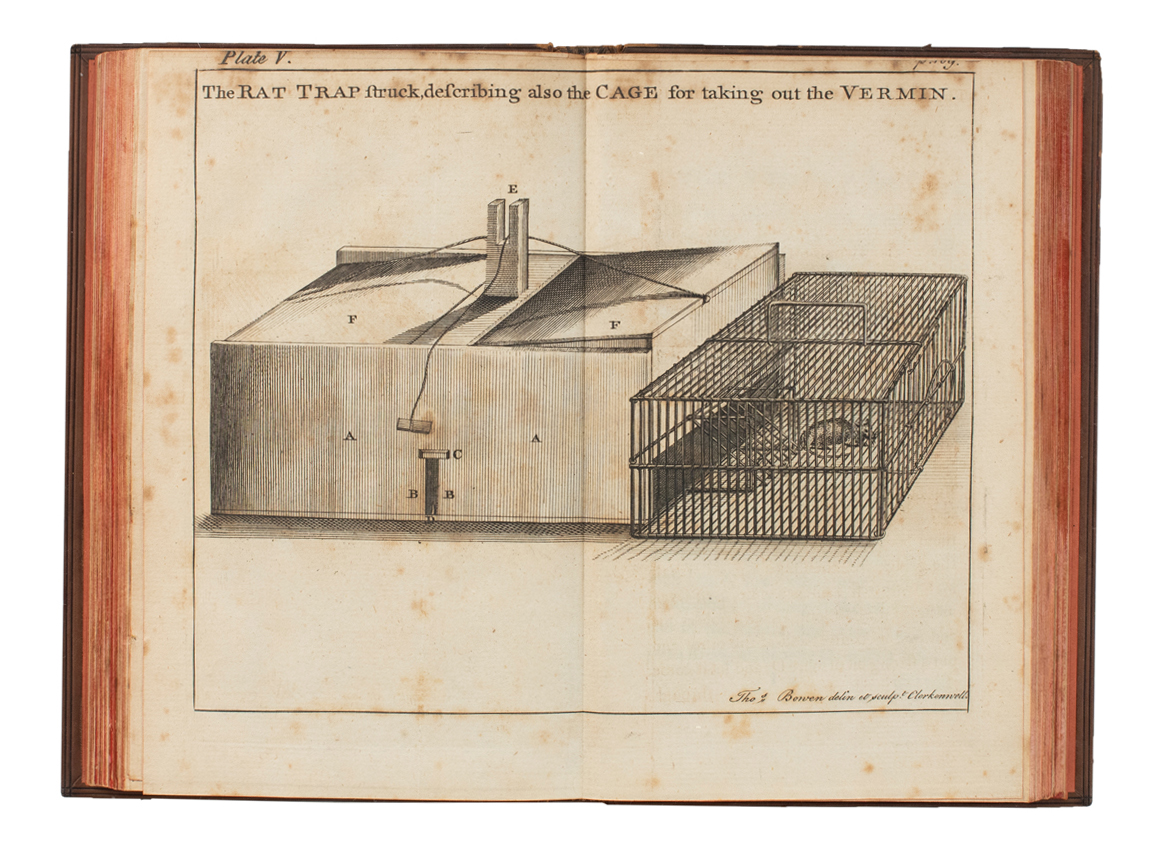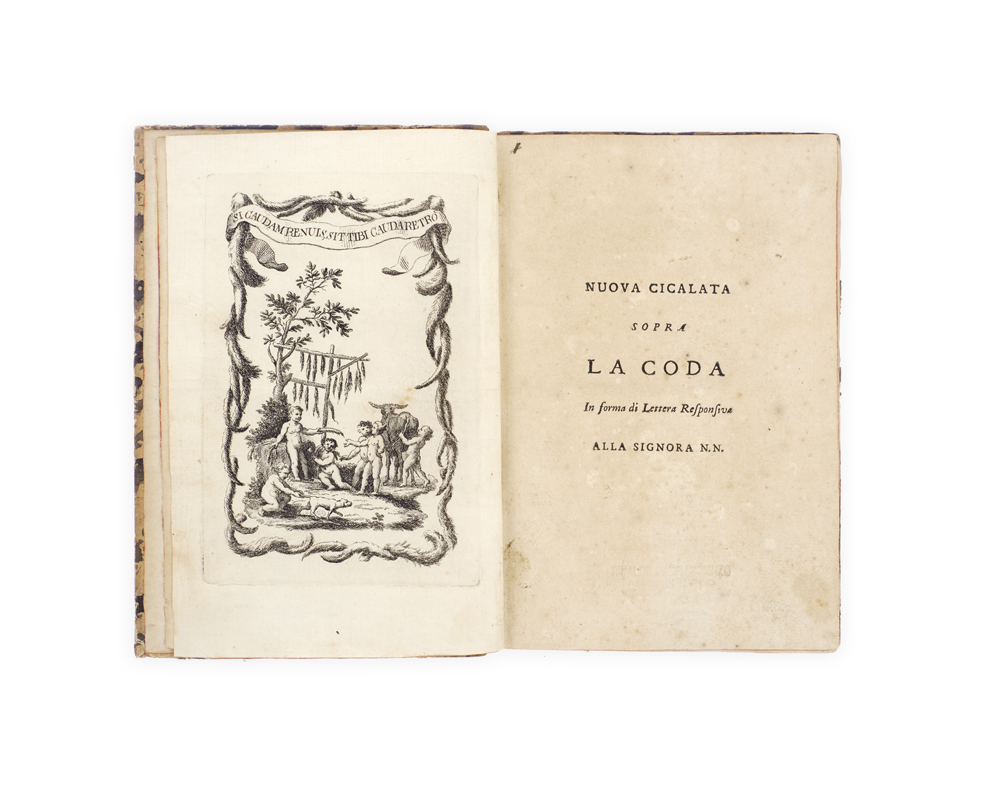
DESTROYING ‘THE NOXIOUS PART OF THE CREATION’
SMITH, Robert.
The Universal Directory for taking alive and destroying Rats, and all other Kinds of four-footed and winged Vermin, in a Method hitherto unattempted: calculated for the Use of the Gentleman, the Farmer, and the Warrener …
London, printed for the author, 1768.
8vo, pp. iv, [1], iv-vii, [1], 218; with 6 engraved plates, printed slip threatening prosecution for reprinting or pirating pasted to title verso; some foxing throughout, but otherwise a good copy; in nineteenth-century brown calf by Leighton of Brewer Street, spine lettered in gilt, red edges; some scuffs to corners and spine; ink inscription to title ‘Charles Freman Sept 1770 pretii 10s 6d’, arms of William Stirling-Maxwell in blind to upper cover and his bookplate.

Added to your basket:
The Universal Directory for taking alive and destroying Rats, and all other Kinds of four-footed and winged Vermin, in a Method hitherto unattempted: calculated for the Use of the Gentleman, the Farmer, and the Warrener …
First edition of a guide to catching and killing all manner of crawling and flying vermin, illustrated with plates, by the professional exterminator and rat-catcher Robert Smith.
King James I may well have believed in the divine right of kings, but it appears that this divine right did not extend to being spared the presence of God’s ‘most mischievous’ creation, the rat. Already in his reign he appointed a royal rat-catcher – salary, 8d a week; dress, ‘scarlet, embroidered with yellow worsted, decorated with the figures of mice destroying weat-sheaves’ – and it appears that this practice continued in the following century: for just such a figure was Robert Smith, official rat-catcher to princess Amelia, the second daughter of king George II, who in 1768 published this complete compendium to exterminating not only rats, but all manner of vermin from the ‘sheep-killing dog’ to the weasel, the mole, and the wood owl.
In addition to describing both the nature and habits of the animals themselves as well as the features of the various traps intended to thereby destroy them, Smith’s work contains six detailed plates – the work of the London engraver Thomas Bowen (d. 1790) – which depict the construction and machinations of his different deathly contraptions. It seems that Smith found some success in this business, both in exterminating the creatures themselves and in teaching others how to follow his example: his use of the live-trap – with which he once caught seventy-two rats in one night (p. 104) and which is lovingly illustrated on p. 108 – was still being recommended as the best example thereof more than a century later (‘Vermin of the Farm’, in Journal of the Agricultural Society of England 3 (1892), pp. 210-211).
Provenance: from the library of the Scottish art historian, writer, and politician William Stirling-Maxwell (1818–1878), ninth Baronet. Whether Stirling-Maxwell purchased this book as merely a curiosity or whether he was dealing with his own rat infestation at Keir House is unknown.
ESTC T132212.

